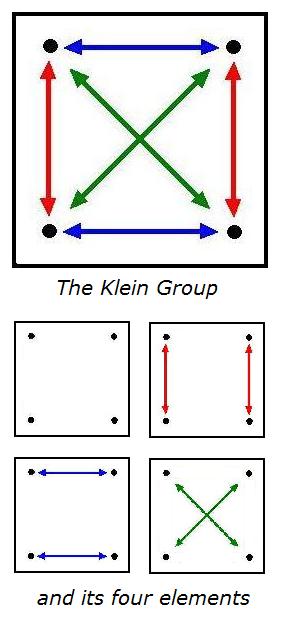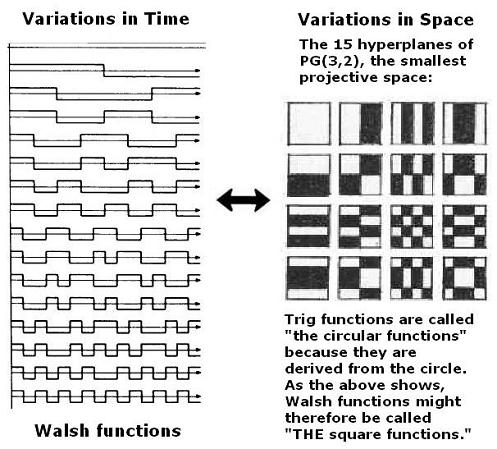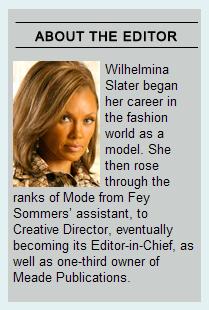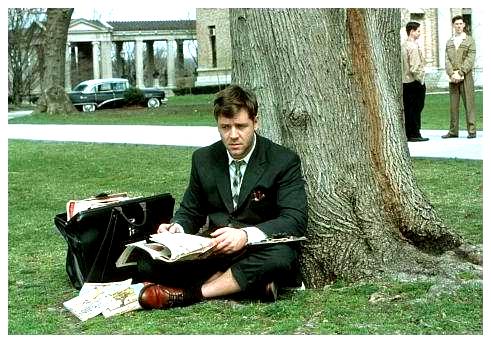“It’s a dance,
for goodness’ sake.”
— Scott Houston

For the lyrics, see Sinatra.
“It’s a dance,
for goodness’ sake.”
— Scott Houston

For the lyrics, see Sinatra.

A copy of this picture, with
left and right reversed, appears
on the front and back covers
of the Feb. 2006 MIT Press
book The Parallax View,
by Slavoj Zizek.
(See previous entry.)


| MIT Press: The Parallax View Slavoj Zizek Published on February 17, 2006  The Parallax View is Slavoj Zizek’s most substantial theoretical work to appear in many years; Zizek himself describes it as his magnum opus. Parallax can be defined as the apparent displacement of an object, caused by a change in observational position. Zizek is interested in the “parallax gap” separating two points between which no synthesis or mediation is possible, linked by an “impossible short circuit” of levels that can never meet. From this consideration of parallax, Zizek begins a rehabilitation of dialectical materialism. |
“If you liked Badiou,
you’ll love ‘Zizek!’.”
Getting All
the Meaning In
Webpage heading for the
2009 meeting of the
American Comparative
Literature Association:
The mysterious symbols on
the above map suggest the
following reflections:
From A Cure of the Mind: The Poetics of Wallace Stevens, by Theodore Sampson, published by Black Rose Books Ltd., 2000–
Page x:
"… if what he calls 'the spirit's alchemicana' (CP [Collected Poems] 471) addresses itself to the irrational element in poetry, to what extent is such an element dominant in his theory and practice of poetry, and therefore in what way is Stevens' intricate verbal music dependent on his irrational use of language– a 'pure rhetoric of a language without words?' (CP 374)?"
| From "'When Novelists Become Cubists:' The Prose Ideograms of Guy Davenport," by Andre Furlani:
Laurence Zachar argues that Davenport's writing is situated "aux frontieres intergeneriques" where manifold modes are brought into concord: "L'etonnant chez Davenport est la facon don't ce materiau qui parait l'incarnation meme du chaos– hermetique, enigmatique, obscur, avec son tropplein de references– se revele en fait etre construit, ordonne, structure. Plus l'on s'y plonge, et plus l'on distingue de cohesion dans le texte." 'What astonishes in Davenport is the way in which material that seems the very incarnation of chaos– hermetic, enigmatic, obscure, with its proliferation of allusions– in fact reveals itself to be constructed, organized, structured. The more one immerses oneself in them the more one discerns the texts' cohesion.' (62). Davenport also works along the intergeneric border between text and graphic, for he illustrates many of his texts. (1) "The prime use of words is for imagery: my writing is drawing," he states in an interview (Hoeppfner 123). Visual imagery is not subordinated to writing in Davenport, who draws on the assemblage practice of superimposing image and writing. "I trust the image; my business is to get it onto the page," he writes in the essay "Ernst Machs Max Ernst." "A page, which I think of as a picture, is essentially a texture of images. […] The text of a story is therefore a continuous graph, kin to the imagist poem, to a collage (Ernst, Willi Baumeister, El Lissitzky), a page of Pound, a Brakhage film" (Geography 374-75). Note: (1.) Davenport is an illustrator of books (such as Hugh Kenner's The Stoic Comedians and The Counterfeiters) and journals (such as The Kenyon Review, Parnassus, and Paideuma). His art is the subject of Erik Anderson Reece's monograph, A Balance of Quinces, which reveals the inseparable relationship between Davenport's literary and pictorial work. References: Davenport, Guy. The Geography of the Imagination. San Francisco: North Point Press, 1981. Rpt. New York: Pantheon, 1992. Hoepffner, Bernard. "Pleasant Hill: An Interview with Guy Davenport." Conjunctions 24 (1995): 118-24. Reece, Erik Anderson. A Balance of Quinces: The Paintings and Drawings of Guy Davenport. New York: New Directions, 1996. Zachar, Laurence. "Guy Davenport: Une Mosaique du genres." Recherches Anglaises et Nord-Americaines 21 (1994): 51-63. |
"… when novelists become Cubists; that is, when they see the possibilities of making a hieroglyph, a coherent symbol, an ideogram of the total work. A symbol comes into being when an artist sees that it is the only way to get all the meaning in."
— Guy Davenport, The Geography of the Imagination
The 4-day annual meeting
of the American Comparative
Literature Association
concludes today.
This year the the meeting
is held at Harvard University.
(Program– pdf, 256 pp.)
— Erich Auerbach, Mimesis: The Representation of Reality in Western Literature (Princeton edition of 1953, p. 45, as quoted at Wikipedia)
| The Washington Post on its literary columnist Michael Dirda:
“… he holds a PhD in comparative literature from Cornell….” Dirda on author James Purdy (April 5, 2000): QUESTION: “What do you make of Purdy and his place in 20th century American fiction?” |
“See you in the
funny papers, Purdy.”
The Rest
of the Story
Today's previous entry discussed the hermeneutics of the midday NY and PA lottery numbers.
| Lotteries on Reba's birthday, 2009 |
Pennsylvania (No revelation) |
New York (Revelation) |
| Mid-day (No belief) |
No belief, no revelation 726 |
Revelation without belief 378 |
| Evening (Belief) |
Belief without revelation 006 |
Belief and revelation 091 |
Interpretations of the evening numbers–
The PA evening number, 006, may be viewed as a followup to the PA midday 726 (or 7/26, the birthday of Kate Beckinsale and Carl Jung). Here 006 is the prestigious "00" number assigned to Beckinsale.

The NY evening number, 091, may be viewed as a followup to the NY midday 378 (the number of pages in The Innermost Kernel by Suzanne Gieser, published by Springer, 2005)–
Page 91: The entire page is devoted to the title of the book's Part 3– "The Copenhagen School and Psychology"–

The next page begins: "With the crisis of physics, interest in epistemological and psychological questions grew among many theoretical physicists. This interest was particularly marked in the circle around Niels Bohr."
The circle above is
marked with a version of
the classic Chinese symbol
adopted as a personal emblem
by Danish physicist Niels Bohr,
leader of the Copenhagen School.
"Two things of opposite natures seem to depend
On one another, as a man depends
On a woman, day on night, the imagined
On the real. This is the origin of change.
Winter and spring, cold copulars, embrace
And forth the particulars of rapture come."
-- Wallace Stevens,
"Notes Toward a Supreme Fiction,"
Canto IV of "It Must Change"
The square above is marked
with a graphic design
related to the four-diamond
figure of Jung's Aion.
Today’s midday
lotteries:
NY 378
PA 726
Interpretation:
The 378 pages of
a book on Pauli and Jung,
“The Innermost Kernel“
The date, 7/26, of
birth for Jung and for
Kate Beckinsale,
star of
“Serendipity“
See also today’s previous entry
and “Bright Star and Dark Lady”
from 7/26, 2003.
“Time: the moving
image of eternity.”
— Plato
Happy birthday,
Reba McEntire
| Denmark Abonti |
uid=48323914 (Rohatsu Venus) |
3/28/2009 7:49 AM |
The Child Trap
See E! Online, March 18 — Lindsay Lohan Remembers Parent Trap Mum
See also

For those who like such things, an excellent Marxist analysis of Watchmen from another fan:
Whitson, Roger. “Panelling Parallax: The Fearful Symmetry of Alan Moore and William Blake.” ImageTexT: Interdisciplinary Comics Studies Vol. 3 No. 2 (2007). Dept. of English, University of Florida.
Whitson’s subject, Alan Moore, is the author of the Watchmen graphic novel. Moore’s style seems less suited to the Forth family pictured above than to Lindsay Lohan fans– who may also enjoy another graphic novel by Moore, Lost Girls.
More Lohan material related to her role in “Georgia Rule“–
Further background:
“The film realizes that if people actually fought crime, they’d most likely be crazy. Take The Comedian for an example. He fights crime, sure. He’s also a raging alcoholic.” –“‘Watchmen’ a flawed masterpiece,” by Ryan Michaels
See also the following expanded version of a link from Sunday morning, March 22:
“Family and friends of Natasha Richardson said their final farewells to the late actress Sunday afternoon during a small, private funeral held near her Millbrook home in upstate New York….
Richardson died on Wednesday [March 18, 2009] at the age of 45 from a head injury she suffered [on Monday, March 16, 2009] while skiing in Canada.
The funeral began after the family arrived in a police-escorted motorcade at St. Peter’s Episcopal Church in Lithgow, where Neeson and her sons are members….”
For what it’s worth…
Background image
for the E! story:

Related images —
Midsummer Night
in the Garden of
Good and Evil.
See also:
“God as Trauma,”
by a former vicar
of the Lithgow church,
and Drunkard’s Walk.
(continued from
last night)
“I argue that Sophocles did not intend to present either Antigone or Creon as the hero/heroine for his tragic play, as Hegel, Kierkegaard, and others stipulate. Rather, Sophocles presents the Chorus and the Watchman as the true heroic figures.”
–“A Burkean Reading of the Antigone: Comical and Choral Transcendence,” by Rebecca McCarthy, Kaplan University
“Pope tells clergy in Angola
to work against
belief in witchcraft”
— Headline in tonight’s
online New York Times
Related material:
Fantasy and Fugue
and the same words
as rendered by
Bach and Schweitzer
See also
Yesterday’s entries
and
Midsummer Night
in the Garden
of Good and Evil.
"There is a body
on the cross
in my church."

Sean Penn and Nicole Kidman
in "The Interpreter."
Click to enlarge.
"My card."
|
"Is Heart of Darkness the story of Kurtz or the story of Marlow’s experience of Kurtz? Was Marlow invented as a rhetorical device for heightening the meaning of Kurtz’s moral collapse, or was Kurtz invented in order to provide Marlow with the centre of his experience in the Congo? Again a seamless web, and we tell ourselves that the old-fashioned question 'Who is the protagonist?' is a meaningless one."
|
Counters in Rows
"Music, mathematics, and chess are in vital respects dynamic acts of location. Symbolic counters are arranged in significant rows. Solutions, be they of a discord, of an algebraic equation, or of a positional impasse, are achieved by a regrouping, by a sequential reordering of individual units and unit-clusters (notes, integers, rooks or pawns)."
— George Steiner
(See March 10, "Language Game.")
Non entia enim licet quodammodo levibusque hominibus facilius atque incuriosius verbis reddere quam entia, veruntamen pio diligentique rerum scriptori plane aliter res se habet: nihil tantum repugnat ne verbis illustretur, at nihil adeo necesse est ante hominum oculos proponere ut certas quasdam res, quas esse neque demonstrari neque probari potest, quae contra eo ipso, quod pii diligentesque viri illas quasi ut entia tractant, enti nascendique facultati paululum appropinquant.
— ALBERTUS SECUNDUS
tract. de cristall. spirit.
ed. Clangor et Collof. lib. I, cap. 28.
In Joseph Knecht’s holograph translation:.
For although in a certain sense and for light-minded persons non-existent things can be more easily and irresponsibly represented in words than existing things, for the serious and conscientious historian it is just the reverse. Nothing is harder, yet nothing is more necessary, than to speak of certain things whose existence is neither demonstrable nor probable. The very fact that serious and conscientious men treat them as existing things brings them a step closer to existence and to the possibility of being born.


Religion and Narrative, continued:
|
Context:
Notes on Mathematics and Narrative
(entries in chronological order,
March 13 through 19)
This 1495 image is found in
The Janus Faces of Genius:
The Role of Alchemy
in Newton's Thought,
by B. J. T. Dobbs,
Cambridge U. Press,
2002, p. 85
From
Kernel of Eternity:

From
Sacerdotal Jargon
at Harvard:

From "The Fifth Element"
(1997, Milla Jovovich
and Bruce Willis) —
The crossing of the beams:
Happy birthday, Bruce Willis.
Click to enlarge.
From another place:
“… a kind of cross.”
— Gravity’s Rainbow
Yesterday’s entry Deep Structures discussed the “semiotic square,” a device that exemplifies the saying “If you can’t dazzle ’em with brilliance, then baffle ’em with bullshit.”
A search today for what the Marxist critic Fredric Jameson might have meant by saying that the square “is capable of generating at least ten conceivable positions out of a rudimentary binary opposition” leads to two documents of interest.
1. “Theory Pictures as Trails: Diagrams and the Navigation of Theoretical Narratives” (pdf), by J.R. Osborn, Department of Communication, University of California, San Diego (Cognitive Science Online, Vol.3.2, pp.15-44, 2005)
2. “The Semiotic Square” (html), by Louis Hébert (2006), professor, Université du Québec à Rimouski, in Signo (http://www.signosemio.com).
Shown below is Osborn’s picture of the semiotic square:

On the brighter side, we have, as a sign that Gallic clarity still exists, the work of Hébert.
Here is how he approaches Jameson’s oft-quoted, but seemingly confused, remark about “ten conceivable positions”–
“The Semiotic Square,”
|
|||||||||||||||||||||||||||||
|
5. (=1+2) COMPLEX TERM
|
||||||||||||||
|
||||||||||||||
|
7. (=1+3) POSITIVE DEIXIS |
8. (=2+4) NEGATIVE DEIXIS
|
|||||||||||||
|
6. (=3+4) NEUTRAL TERM
|
||||||||||||||
LEGEND:
The + sign links the terms that are combined to make up a metaterm (a compound term); for example, 5 is the result of combining 1 and 2.
The semiotic square entails primarily the following elements (we are steering clear of the constituent relationships of the square: contrariety, contradiction, and complementarity or implication):
1. terms
2. metaterms (compound terms)
3. object(s) (classified on the square)
4. observing subject(s) (who do the classifying)
5. time (of the observation)
The semiotic square is composed of four terms:
Position 1 (term A)
Position 2 (term B)
Position 3 (term not-B)
Position 4 (term not-A)
The first two terms form the opposition (the contrary relationship) that is the basis of the square, and the other two are obtained by negating each term of the opposition.
The semiotic square includes six metaterms. The metaterms are terms created from the four simple terms. Some of the metaterms have been named. (The complex term and the neutral term, despite their names, are indeed metaterms).
Position 5 (term 1 + term 2): complex term
Position 6 (term 3 + term 4): neutral term
Position 7 (term 1 + term 3): positive deixis
Position 8 (term 2 + term 4): negative deixis
Position 9 = term 1 + term 4: unnamed
Position 10 = term 2 + term 3: unnamed
These ten “positions” are apparently meant to explain Jameson’s remark.
Hébert’s treatment has considerably greater entertainment value than Osborn’s. Besides “the living dead” and angels, Hébert’s examples and exercises include vampires, transvestites, the Passion of Christ, and the following very relevant quotation:
“Simply let your ‘Yes’ be ‘Yes,’ and your ‘No,’ ‘No’; anything beyond this comes from the evil one.” (Matthew 5:37)

The Square of Oppositon
at Stanford Encylopedia of Philosophy

The Square of Opposition
in its original form
"The diagram above is from a ninth century manuscript of Apuleius' commentary on Aristotle's Perihermaneias, probably one of the oldest surviving pictures of the square."
— Edward Buckner at The Logic Museum
From the webpage "Semiotics for Beginners: Paradigmatic Analysis," by Daniel Chandler:

The Semiotic Square
"The structuralist semiotician Algirdas Greimas introduced the semiotic square (which he adapted from the 'logical square' of scholastic philosophy) as a means of analysing paired concepts more fully (Greimas 1987,* xiv, 49). The semiotic square is intended to map the logical conjunctions and disjunctions relating key semantic features in a text. Fredric Jameson notes that 'the entire mechanism… is capable of generating at least ten conceivable positions out of a rudimentary binary opposition' (in Greimas 1987,* xiv). Whilst this suggests that the possibilities for signification in a semiotic system are richer than the either/or of binary logic, but that [sic] they are nevertheless subject to 'semiotic constraints' – 'deep structures' providing basic axes of signification."
* Greimas, Algirdas (1987): On Meaning: Selected Writings in Semiotic Theory (trans. Paul J Perron & Frank H Collins). London: Frances Pinter
Another version of the semiotic square:

Here is a more explicit figure representing the Klein group:

There is also the logical
diamond of opposition —

A semiotic (as opposed to logical)
diamond has been used to illustrate
remarks by Fredric Jameson,
a Marxist literary theorist:
|
"Introduction to Algirdas Greimas, Module on the Semiotic Square," by Dino Felluga at Purdue University–
The semiotic square has proven to be an influential concept not only in narrative theory but in the ideological criticism of Fredric Jameson, who uses the square as "a virtual map of conceptual closure, or better still, of the closure of ideology itself" ("Foreword"* xv). (For more on Jameson, see the [Purdue University] Jameson module on ideology.) Greimas' schema is useful since it illustrates the full complexity of any given semantic term (seme). Greimas points out that any given seme entails its opposite or "contrary." "Life" (s1) for example is understood in relation to its contrary, "death" (s2). Rather than rest at this simple binary opposition (S), however, Greimas points out that the opposition, "life" and "death," suggests what Greimas terms a contradictory pair (-S), i.e., "not-life" (-s1) and "not-death" (-s2). We would therefore be left with the following semiotic square (Fig. 1): 
As Jameson explains in the Foreword to Greimas' On Meaning, "-s1 and -s2"—which in this example are taken up by "not-death" and "not-life"—"are the simple negatives of the two dominant terms, but include far more than either: thus 'nonwhite' includes more than 'black,' 'nonmale' more than 'female'" (xiv); in our example, not-life would include more than merely death and not-death more than life.
* Jameson, Fredric. "Foreword." On Meaning: Selected Writings in Semiotic Theory. By Algirdas Greimas. Trans. Paul J. Perron and Frank H. Collins. Minneapolis: U of Minnesota P, 1976.
|
— The Gameplayers of Zan, by M.A. Foster
"For every kind of vampire,
there is a kind of cross."
— Thomas Pynchon,
Gravity's Rainbow
Crosses used by semioticians
to baffle their opponents
are illustrated above.
Some other kinds of crosses,
and another kind of opponent:
|
Monday, July 11, 2005
Logos
for St. Benedict's Day Click on either of the logos below for religious meditations– on the left, a Jewish meditation from the Conference of Catholic Bishops; on the right, an Aryan meditation from Stormfront.org. Both logos represent different embodiments of the "story theory" of truth, as opposed to the "diamond theory" of truth. Both logos claim, in their own ways, to represent the eternal Logos of the Christian religion. I personally prefer the "diamond theory" of truth, represented by the logo below.
See also the previous entry Sunday, July 10, 2005
Mathematics
and Narrative Click on the title for a narrative about
Nikolaos K. Artemiadis,

"First of all, I'd like to
— Remark attributed to Plato
|
||||||||
Annals of Prose Style
|
“Preserving a strict unity of time and place, this stark tale of a young woman’s decline into insanity is set in a summer home on a holiday island. It is the first part of the trilogy

that comprises Winter Light and The Silence, films which are generally seen as addressing Bergman’s increasing disillusionment with the emotional coldness of his inherited Lutheran religion. In particular here, Bergman focuses on the absence of familial love which might perhaps have pulled Karin (Andersson) back from the brink; while Karin’s mental disintegration manifests itself in the belief that God is a spider. As she slips inexorably into madness, she is observed with terrifying objectivity by her emotionally paralyzed father (Björnstrand) and seemingly helpless husband (von Sydow).”
— Nigel Floyd, Time Out, quoted at Bergmanorama
Related material:
1. The “spider” symbol of Fritz Leiber’s short story “Damnation Morning“–

2. The Illuminati Diamond of Hollywood’s “Angels & Demons” (to open May 15), and
3. The following diagram by one “John Opsopaus“–
Annals of Prose Style
|
“Preserving a strict unity of time and place, this stark tale of a young woman’s decline into insanity is set in a summer home on a holiday island. It is the first part of the trilogy that comprises Winter Light and The Silence, films which are generally seen as addressing Bergman’s increasing disillusionment with the emotional coldness of his inherited Lutheran religion. In particular here, Bergman focuses on the absence of familial love which might perhaps have pulled Karin (Andersson) back from the brink; while Karin’s mental disintegration manifests itself in the belief that God is a spider. As she slips inexorably into madness, she is observed with terrifying objectivity by her emotionally paralyzed father (Björnstrand) and seemingly helpless husband (von Sydow).”
Related material:
1. The “spider” symbol of Fritz Leiber’s short story “Damnation Morning”–

2. Hollywood’s “Angels & Demons” (to open May 15), and
3. The following diagram by one “John Opsopaus”–

— Princeton University Press on Plato’s Ghost: The Modernist Transformation of Mathematics (by Jeremy Gray, September 2008)
“She’s a brick house…”
— Plato’s Ghost according to
Log24, April 2007
“First of all, I’d like
to thank the Academy.”
— Remark attributed to Plato

(Cf. the “I tell you a mystery”
link of March 11 in
“Politics, Religion, Scarlett.”)
(Cf. Sinatra’s birthday, 2004)


One for his baby:

Ron Silver as
Alan Dershowitz in
“Reversal of Fortune”
suggests the epigraph of
The Particulars of Rapture:
Reflections on Exodus —
two stanzas from attorney
Wallace Stevens
quoted here yesterday afternoon.
One more for the road:
A link that appeared in a
different form in Saturday’s
“Flowers for Barry“–
Speed the Plow.
This leads to
A Hanukkah Tale
containing the following:

The Origin of Change
A note on the figure
from this morning's sermon:
"Two things of opposite natures seem to depend On one another, as a man depends On a woman, day on night, the imagined On the real. This is the origin of change. Winter and spring, cold copulars, embrace And forth the particulars of rapture come." -- Wallace Stevens, "Notes Toward a Supreme Fiction," Canto IV of "It Must Change"
Angels, Demons,
"Symbology"
"On Monday morning, 9 March, after visiting the Mayor of Rome and the Municipal Council on the Capitoline Hill, the Holy Father spoke to the Romans who gathered in the square outside the Senatorial Palace…
'… a verse by Ovid, the great Latin poet, springs to mind. In one of his elegies he encouraged the Romans of his time with these words:
"Perfer et obdura: multo graviora tulisti."
"Hold out and persist:
you have got through
far more difficult situations."
(Tristia, Liber V, Elegia XI, verse 7).'"
Note the color-interchange
symmetry of each symbol
under 180-degree rotation.
Related material:
The Illuminati Diamond:


A possible source for Brown's term "symbology" is a 1995 web page, "The Rotation of the Elements," by one "John Opsopaus." (Cf. Art History Club.)
"The four qualities are the key to understanding the rotation of the elements and many other applications of the symbology of the four elements." –John Opsopaus
* "…ambigrams were common in symbology…." —Angels & Demons

|
On Time
(in Mathematics and Literature) “… I want to spend these twenty minutes savoring, and working up, the real complexity of the metaphorical relationship of time and distance– to defamiliarize it for us. And then I will give a few examples of how imaginative literature makes use of the inherent strangeness in this relationship: Time ↔ Distance.
And finally I will offer my opinion (which I think must be everyone’s opinion) about why we derive significant– but not total– comfort from this equation.” — Barry Mazur, March 8, 2009, draft (pdf) of talk for conference on comparative literature* |
Another version of
Mazur’s metaphor
Time ↔ Distance:

— Steven H. Cullinane,
October 8, 2003
For some context in
comparative literature,
see Time Fold
(Oct. 10, 2003)
and A Hanukkah Tale
(Dec. 22, 2008).
Related material:
Rat Psychology
yesterday.
“This could be Heaven
or this could be Hell.”
— “Hotel California”
Heaven —

or —

Hell —

“Fear + hate = power was Mike Freesmith’s formula for success. He first tested it in high school when he seduced his English teacher and drove a harmless drunk to suicide. He used it on the woman who paid his way through college. He used it to put his candidate in the governor’s chair, and to make himself the most ruthless, powerful kingmaker in American politics.”
Don’t forget greed. See yesterday’s Friday the 13th entries.
Lawrence Summers, former president of Harvard, home of the rat psychology of Skinner and Quine, today offered a lesson in behavioral economics.
From a transcript of Summers’s remarks (for a video, see the previous entry)–
“An abundance of greed and an absence of fear on Wall Street led some to make purchases – not based on the real value of assets, but on the faith that there would be another who would pay more for those assets. At the same time, the government turned a blind eye to these practices and their potential consequences for the economy as a whole. This is how a bubble is born. And in these moments, greed begets greed. The bubble grows.
Eventually, however, this process stops – and reverses. Prices fall. People sell. Instead of an expectation of new buyers, there is an expectation of new sellers. Greed gives way to fear. And this fear begets fear.
This is the paradox at the heart of the financial crisis. In the past few years, we’ve seen too much greed and too little fear; too much spending and not enough saving; too much borrowing and not enough worrying. Today, however, our problem is exactly the opposite.
It is this transition from an excess of greed to an excess of fear that President Roosevelt had in mind when he famously observed that the only thing we had to fear was fear itself. It is this transition that has happened in the United States today.”
Related material
Spatial Practice,
Paris-Style:
“Voids, a Retrospective,”
an exhibit of empty rooms
that runs through March 23
at the Centre Pompidou
See also “Art Humor“
and “Conceptual Art.”
“When did Wharton School take over?”
— Chris Matthews tonight on “Hardball”
Related material
from the
Harvard school:
Tom Conoboy on James Purdy’s novel Malcolm:
“Life, Purdy is telling us, is meaningless. Existence is absurd. It consists of events and happenings, all unavoidable, all simultaneously significant and meaningless. They touch you, wound even, ultimately kill, yet somehow existence appears to obtain in a bubble outside of the self. As Thomas M. Lorch describes it, ‘the novel portays humanity revolving about an abyss.'[1] What is real is not real, and what is not real becomes real. Malcolm describes himself as a ‘cypher’ and, in the end, his death affects no-one, least of all him.
Yet, through this, Purdy presents us with the final, and greatest, paradox. In presenting us with nothingness, and in deliberately describing the action in such bland and emotionless language, Purdy actually creates a sense of loss: there is nothing to lose, he is telling us, and yet we feel the loss greatly. What he does is to create a world of genuine nihilism, where nobody communicates, nobody connects, so that we can, in negative, imagine what a world in harmony might be like.”
[1] Thomas M. Lorch, “Purdy’s Malcolm: A Unique Vision of Radical Emptiness.” Wisconsin Studies in Contemporary Literature, Vol. 6, No. 2 (Summer, 1965), p. 212.

From 12:00 AM on last month’s
Friday the 13th:

From the soundtrack CD of
“Midnight in the Garden
of Good and Evil”–
“Accentuate the positive.”
— Clint Eastwood
 |
My advice for this month is to learn the lesson from the young and innocent. Embrace optimism and go forward with life, hoping only for the best…. Accentuate your positives and don’t worry about your negatives…. Because when you smile, others smile back.
Wilhelmina Slater |

Related material:
Aspects of Symmetry,
from the day that
Scarlett Johansson
turned 23, and…
|
"…A foyer of the spirit in a landscape
In which we read the critique of paradise — "Crude Foyer," by Wallace Stevens |
The Associated Press, “Today in History” March 11– On this date…
“In 1959, the Lorraine Hansberry drama ‘A Raisin in the Sun’ opened at New York’s Ethel Barrymore Theater.”
| Miles to Go…
With a wink to Lois Wyse |
The New York Times March 10–
"Paris | A Show About Nothing"–

The Times describes one of the empty rooms on exhibit as…
"… Yves Klein’s 'La spécialisation de la sensibilité à l’état matière première en sensibilité picturale stabilisée, Le Vide' ('The Specialization of Sensibility in the Raw Material State Into Stabilized Pictorial Sensibility, the Void')"
This is a mistranslation. See "An Aesthetics of Matter" (pdf), by Kiyohiko Kitamura and Tomoyuki Kitamura, pp. 85-101 in International Yearbook of Aesthetics, Volume 6, 2002—
"The exhibition «La spécialisation de la sensibilité à l’état matière-première en sensibilité picturale stabilisée», better known as «Le Vide» (The Void) was held at the Gallery Iris Clert in Paris from April 28th till May 5th, 1955." –p. 94
"… «Sensibility in the state of prime matter»… filled the emptiness." –p. 95
Kitamura and Kitamura translate matière première correctly as "prime matter" (the prima materia of the scholastic philosophers) rather than "raw material." (The phrase in French can mean either.)
The link above to
prima materia
is to an 1876 review
by Cardinal Manning of
a work on philosophy
by T. P. Kirkman, whose
"schoolgirl problem" is
closely related to the
finite space of the
diamond theorem.
Immortal Diamond
continued:
"That flower unseen, that gem of purest ray,
Bright thoughts uncut by men:
Strange that you need but speak them, Thomas Gray,
And the mind skips and dives beyond its ken,
Finding at once the wild supposed bloom,
Or in the imagined cave
Some pulse of crystal staving off the gloom
As covertly as phosphorus in a grave."
— From "In a Churchyard," by Richard Wilbur
"A metaphysical assertion of this kind is the idea of the 'diamond body,' the indestructible breath-body which develops in the Golden Flower, or in the square inch space."
— The Secret of the Golden Flower, by Richard Wilhelm, Carl Gustav Jung, and Hua-Yang Liu, second rev. ed., publ. by Routledge, 1999, pp. 130-131
For more about these concepts, see the work cited.
“Music, mathematics, and chess are in vital respects dynamic acts of location. Symbolic counters are arranged in significant rows. Solutions, be they of a discord, of an algebraic equation, or of a positional impasse, are achieved by a regrouping, by a sequential reordering of individual units and unit-clusters (notes, integers, rooks or pawns). The child-master, like his adult counterpart, is able to visualize in an instantaneous yet preternaturally confident way how the thing should look several moves hence. He sees the logical, the necessary harmonic and melodic argument as it arises out of an initial key relation or the preliminary fragments of a theme. He knows the order, the appropriate dimension, of the sum or geometric figure before he has performed the intervening steps. He announces mate in six because the victorious end position, the maximally efficient configuration of his pieces on the board, lies somehow ‘out there’ in graphic, inexplicably clear sight of his mind….”
“… in some autistic enchantment, pure as one of Bach’s inverted canons or Euler’s formula for polyhedra.”
— George Steiner, “A Death of Kings,” in The New Yorker, issue dated Sept. 7, 1968
“Classrooms are filled with discussions not of the Bible and Jesus but of 10 ‘core values’– perseverance and curiosity, for instance– that are woven into the curriculum.”
— “Secular Education, Catholic Values,” by Javier C. Hernandez, The New York Times, Sunday, March 8, 2009
— Raymond Chandler, The Big Sleep
The Chandler quotation appears in “Language Game,” an entry in this journal on April 7, 2008.
Some say the “Language Game” date, April 7, is the true date (fixed, permanent) of the Crucifixion– by analogy, Eliot’s “still point” and Jung’s “centre.” (See yesterday, noon.)
Next Sunday's New York Times Book Review arrived in today's mail. On the inside of the first page is a full-page ad for a course of 24 lectures on DVD's called "Games People Play: Game Theory in Life, Business, and Beyond." On the inside of the last page is "Our Steiner Problem– and Mine," a full-page essay by Lee Siegel on polymath George Steiner.
Related material:
Happy birthday to the late Bobby Fischer.

Humorism

"Always with a
little humor."
— Dr. Yen Lo

From Temperament: A Brief Survey
For other interpretations
of the above shape, see
The Illuminati Diamond.
from Jung's Aion:
As for rotation, see the ambigrams in Dan Brown's Angels & Demons (to appear as a film May 15) and the following figures:

A related note on
"Angels & Demons"
director Ron Howard:
Transit Authority
In memory of
Stanley Kubrick
(overlooked in
yesterday's memorial)
| "For believers the day of death, and even more the day of martyrdom, is not the end of all; rather, it is the 'transit' towards immortal life. It is the day of definitive birth, in Latin, dies natalis." |

"'Wherever you come near
the human race, there's layers
and layers of nonsense,'
says the Stage Manager in
Thornton Wilder's 'Our Town.'"
— Today's sermon
from Frank Rich



For more layers, see
James A. Michener's
The Source.
|
From James Joyce's A Portrait of the Artist as a Young Man:
he hearth and began to stroke his chin. –When may we expect to have something from you on the esthetic question? he asked. –From me! said Stephen in astonishment. I stumble on an idea once a fortnight if I am lucky. –These questions are very profound, Mr Dedalus, said the dean. It is like looking down from the cliffs of Moher into the depths. Many go down into the depths and never come up. Only the trained diver can go down into those depths and explore them and come to the surface again. –If you mean speculation, sir, said Stephen, I also am sure that there is no such thing as free thinking inasmuch as all thinking must be bound by its own laws. –Ha! –For my purpose I can work on at present by the light of one or two ideas of Aristotle and Aquinas. –I see. I quite see your point. |
Besides being Mondrian's birthday, today is also the dies natalis (in the birth-into-heaven sense) of St. Thomas Aquinas and, for those who believe worthy pre-Christians also enter heaven, possibly of Aristotle.
Pope Benedict XVI explained the dies natalis concept on Dec. 26, 2006:
"For believers the day of death, and even more the day of martyrdom, is not the end of all; rather, it is the 'transit' towards immortal life. It is the day of definitive birth, in Latin, dies natalis."
Pictorial version
of Hexagram 20,
Contemplation (View)
In honor of
Aristotle and Aquinas,
here is a new web site,
illuminati-diamond.com,
with versions of the diamond shape
made famous by Mondrian —
TV listing for this evening —
Family Channel, 7:30 PM:
"Harry Potter and
the Sorcerer's Stone"
In other entertainment news —
Scheduled to open May 15:
"Only gradually did I discover
what the mandala really is:
'Formation, Transformation,
Eternal Mind's eternal recreation'"
(Faust, Part Two)
Related material:
| "For just about half a century, E.J. Holmyard's concisely-titled Alchemy has served as a literate, well-informed, and charming introduction to the history and literature of Western alchemy." —Ian Myles Slater |
For more about this
"prime matter" (prima materia)
see The Diamond Archetype

and Holy the Firm.
Background:
Holmyard —
— and Aristotle's
On Generation and Corruption.
Here’s hoping this president knows how to read the newspaper.

|
De Angelis
“Richardson leaned forward and picked up from the table a very old bound book and a very fat exercise book. He again settled himself in his chair, and said, looking firmly at Anthony– ‘This is the De Angelis of Marcellus Victorinus of Bologna, published in the year 1514 at Paris, and dedicated to Leo X.’ ‘Is it?’ Anthony said uncertainly.” — Charles Williams, The Place of the Lion, 1931 |

For more about the artist,
see an entry at the weblog
“Through the Wardrobe”
on Aug. 18, 2008.
Related material:
previous entry.

Stanley Fish in
Sunday’s New York Times
on “Redemption,”
by George Herbert:
“I’m a rolling stone from Texas”
— Theme song in
“Secondhand Lions”
(starring Robert Duvall, 2003)
Foote was not associated with
“Secondhand Lions” (which I
saw for the first time last night)
but has worked many times
with Duvall.
— New York Times obituary of Jacob T. Schwartz dated Tuesday, March 3, 2009
New York Lottery
March 3, 2009:

“Treatment of Autistic Schizophrenic Children with LSD-25 and UML-491“–
“Autistic schizophrenic children present challenging and baffling problems in treatment…. Many of the children have been followed subsequently into later childhood, adolescence, and adulthood…. Meanwhile, a new group of young autistic children are always available for new treatment endeavors as the new modes become available.”*
— Thomas Pynchon in
Gravity’s Rainbow
This entry is continued
from yesterday evening,
from midnight last night,
and from an entry of
February 20 (the date
four years ago of
Hunter Thompson’s death)–
“Emblematizing the Modern“–
|
Emblematizing the Modern
Note that in applications, the vertical axis of the Cross of Descartes often symbolizes the timeless (money, temperature, etc.) while the horizontal axis often symbolizes time. T.S. Eliot:
|
“Selah.”
— The late Hunter Thompson

Yesterday afternoon’s online
New York Times:

Today’s online New York Times:
Footnote

Click poster for details.
Click image for details.
Related material:
The three entries here on
the date of Quarry’s death:
A Kind of Cross, and
Straight
From this journal’s Sunday sermon:
“Flowers’s thoughts stray to Brown,
with affectionate pity, as he
drinks port and eats walnuts
for the first time in
Senior Combination Room.”
— G. H. Hardy recounting the plot
of A Fellow of Trinity
| A Glossary of Cambridge:
Combination Room |
|
George Herbert’s “Redemption” —
But first he has to find him…. Either he’s just left or he hasn’t been seen, but then, unexpectedly and in the most unlikely circumstances, he turns up:
Before he or his reader can ask ‘what on earth are you doing here?,’ the final line provides an answer with a compact swiftness that is literally breathtaking:
|
For Senior Combination Room as
a den of thieves and murderers,
see That Hideous Strength.
Related material:
G. H. Hardy died at 70
on December 1, 1947.
That date is now observed as
“Day Without Art.”
Joyce's Nightmare
continues
Today in History – March 2
|

|
From Gravity's Rainbow (Penguin Classics, 1995), page 563:
"He brings out the mandala he found.
Slothrop gives him the mandala. He hopes it will work like the mantra that Enzian told him once, mba-kayere (I am passed over), mba-kayere… a spell […]. A mezuzah. Safe passage through a bad night…."
In lieu of Slothrop's mandala, here is another…
Christ and the Four Elements
This 1495 image is found in
For further details,
click on any of the three mandalas above. |

Happy birthday to
Tom Wolfe, author of
The Painted Word.
Solomon's Cube
continued
"There is a book… called A Fellow of Trinity, one of series dealing with what is supposed to be Cambridge college life…. There are two heroes, a primary hero called Flowers, who is almost wholly good, and a secondary hero, a much weaker vessel, called Brown. Flowers and Brown find many dangers in university life, but the worst is a gambling saloon in Chesterton run by the Misses Bellenden, two fascinating but extremely wicked young ladies. Flowers survives all these troubles, is Second Wrangler and Senior Classic, and succeeds automatically to a Fellowship (as I suppose he would have done then). Brown succumbs, ruins his parents, takes to drink, is saved from delirium tremens during a thunderstorm only by the prayers of the Junior Dean, has much difficulty in obtaining even an Ordinary Degree, and ultimately becomes a missionary. The friendship is not shattered by these unhappy events, and Flowers's thoughts stray to Brown, with affectionate pity, as he drinks port and eats walnuts for the first time in Senior Combination Room."
— G. H. Hardy, A Mathematician's Apology
"The Solomon Key is the working title of an unreleased novel in progress by American author Dan Brown. The Solomon Key will be the third book involving the character of the Harvard professor Robert Langdon, of which the first two were Angels & Demons (2000) and The Da Vinci Code (2003)." — Wikipedia
"One has O+(6) ≅ S8, the symmetric group of order 8! …."
— "Siegel Modular Forms and Finite Symplectic Groups," by Francesco Dalla Piazza and Bert van Geemen, May 5, 2008, preprint.
"The complete projective group of collineations and dualities of the [projective] 3-space is shown to be of order [in modern notation] 8! …. To every transformation of the 3-space there corresponds a transformation of the [projective] 5-space. In the 5-space, there are determined 8 sets of 7 points each, 'heptads' …."
— George M. Conwell, "The 3-space PG(3, 2) and Its Group," The Annals of Mathematics, Second Series, Vol. 11, No. 2 (Jan., 1910), pp. 60-76
"It must be remarked that these 8 heptads are the key to an elegant proof…."
— Philippe Cara, "RWPRI Geometries for the Alternating Group A8," in Finite Geometries: Proceedings of the Fourth Isle of Thorns Conference (July 16-21, 2000), Kluwer Academic Publishers, 2001, ed. Aart Blokhuis, James W. P. Hirschfeld, Dieter Jungnickel, and Joseph A. Thas, pp. 61-97
Powered by WordPress